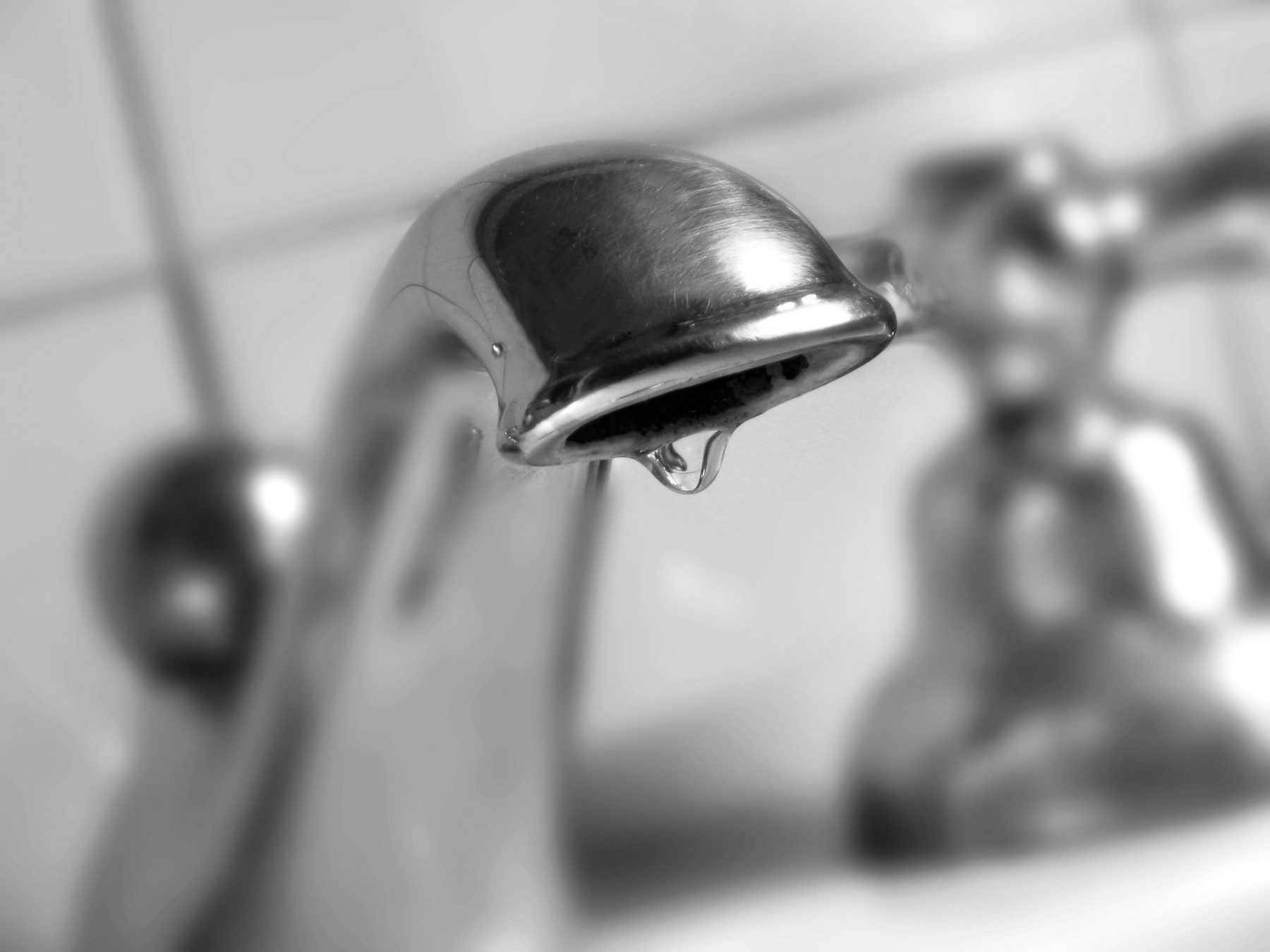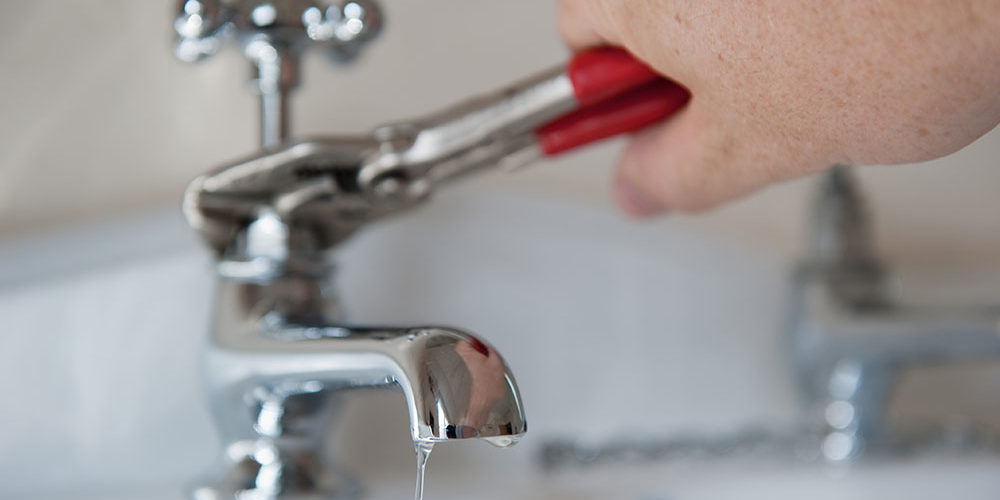Learning the Consequence of a Dripping Faucet
Learning the Consequence of a Dripping Faucet
Blog Article
Just how do you actually feel on the subject of The Environmental Impact of Leaky Faucets?

Intro
A dripping faucet may appear like a minor nuisance, however its repercussions extend far past the periodic drip. Comprehending the impacts of a leaky tap is critical for both home owners and the atmosphere. In this post, we'll explore the different impacts of this common home issue and why addressing it promptly is necessary.
Causes of Leaky Faucets
Dripping taps can arise from a range of variables, consisting of deterioration, high water pressure, and corrosion. With time, the continuous use of taps can bring about damaged seals and gaskets, causing leakages to develop. Furthermore, excessive water pressure can put pressure on plumbing components, leading to leakages. Corrosion and rust can additionally damage faucet components, making them prone to leak.
Water Wastefulness
One of one of the most substantial repercussions of a leaky tap is water wastefulness. Also a tiny drip can add up to gallons of drainage over time. This not only drives up water costs but also contributes to water scarcity and environmental degradation. Addressing leaky taps immediately is critical for conserving this precious source and decreasing its effect on the planet.
Financial Influence
In addition to wasting water, leaky faucets can additionally have a considerable economic impact. Raised water bills are a direct effect of water waste, costing home owners numerous bucks yearly. In addition, the cost of fixing water damages caused by leaks can be significant, specifically if left unattended for a prolonged period.
Ecological Effect
The ecological influence of leaky faucets expands past water wastage. By conserving water, property owners can contribute to wider efforts to alleviate water shortage and protect natural ecosystems. Sustainable choices such as rain harvesting and water-efficient fixtures can further reduce the environmental impact of home water use.
Technical Solutions
Innovations in modern technology have brought about the advancement of clever taps and water-saving devices that assist reduce water wastage. Smart taps utilize sensing units to find activity and readjust water flow accordingly, decreasing waste without compromising comfort. Water-saving gadgets such as aerators and low-flow showerheads are likewise efficient in saving water without jeopardizing efficiency.
Worldwide Viewpoints
While dripping taps may look like a localized concern, they add to wider global challenges such as water deficiency and environment modification. In regions currently encountering water tension, every drop counts, making leakage prevention and fixing crucial. By embracing water-saving techniques and purchasing lasting innovations, home owners can play their part in addressing these pressing international issues.
Regulative Steps
Federal government regulations play a critical role in reducing the effect of dripping taps and promoting water conservation. From developing codes that need water-efficient components to water-saving motivations and discounts, policymakers have a series of devices at their disposal. By implementing and enforcing these regulations, governments can ensure that house owners focus on water conservation in their lives.
Neighborhood Impact
Addressing dripping taps requires collective initiatives at the neighborhood level. By elevating recognition regarding the importance of water preservation and offering resources for leakage detection and repair, neighborhood authorities can equip homeowners to do something about it. Efforts such as water-saving discount programs and leakage detection projects can incentivize behavior adjustment and promote liable water use.
Situation Studies
Real-life instances of the influence of leaking faucets emphasize the significance of aggressive maintenance and timely repair services. From water damage to escalating water costs, the effects of overlooking leakages can be extreme. By sharing these case studies, property owners can better comprehend the value of addressing leaky faucets quickly.
Educational Campaigns
Educational campaigns play an important function in increasing understanding concerning the results of dripping taps and advertising water preservation methods. With workshops, seminars, and online sources, home owners can find out exactly how to identify and fix leakages themselves. By empowering individuals with expertise and devices, academic campaigns can promote a culture of responsible water use within communities.
Health and wellness Problems
Leaky faucets can produce conducive settings for mold and mold development, positioning health threats to passengers. The existence of mold and mildew can exacerbate breathing issues and allergies, particularly in susceptible individuals. Furthermore, water damage resulting from leaks can jeopardize the structural integrity of buildings and lead to costly repairs.
DIY vs. Specialist Fixing
When confronted with a leaking faucet, homeowners commonly dispute whether to attempt repairs themselves or work with an expert plumber. While DIY fixings can save cash, they may not constantly attend to the underlying concern efficiently. Specialist plumbing technicians have the competence and equipment to identify and deal with leaks appropriately, guaranteeing lasting services and satisfaction for property owners.
Safety nets
Protecting against leaky faucets needs normal upkeep and proactive measures. Easy tasks such as changing damaged washing machines and seals can protect against leakages from creating. In addition, updating to high-quality fixtures and reducing water stress can help prolong the lifespan of taps and decrease the threat of leakages.
Final thought
In conclusion, the effects of a dripping faucet extend much past the occasional drip. From water wastage and raised water expenses to health problems and ecological impact, the effects of neglecting leaks can be significant. By attending to leaky taps promptly and taking on water-saving practices, house owners can mitigate these impacts and add to a more sustainable future.
Why You Shouldn’t Ignore a Leaky Faucet in Your Home
What Causes a Leaky Faucet?
Various factors can cause a leak, from loose and worn-out parts to corrosion. Your faucet has four essential components from which most plumbing issues will stem: the O-ring, the valve seat, the washer and the gasket.
What Is an O-Ring?
The O-ring is a stem screw that fastens parts of the faucet in place, preventing water from leaking out of the spout. Depending on your faucet type, the stem might have multiple O-rings. Water will drip from the faucet’s handles and base if this part breaks or deteriorates.
What Is a Valve Seat?
The valve seat controls the flow and temperature of the water. Found at the base of the handle, it works as a seal for the faucet’s stem. The valve seat ensures the water is allowed to flow or is blocked as the handles dictate. You’ll know it’s malfunctioning when water leaks from your faucet’s sides.
What Is a Gasket?
The gasket is found between the water inlet and the valve stem. It creates a seal between the faucet and the sink, holding its joints by aerators attached to the stem’s head. Water will trickle out from the base if the gasket isn’t working.
What Is a Washer?
The washer secures the handles and prevents leakage, serving a similar purpose to the O-ring. While the O-ring is ordinarily round and made from an elastic material, such as rubber, the washer is square-shaped and composed of brass, copper and other hard metals. If it malfunctions, corrodes or has been improperly installed, water will leak out of the handles, causing that incessant faucet drip.
Why Is a Leaky Faucet Dangerous?
A leaky faucet left alone for too long can have significant consequences.
Pest Infestations
Since bugs and rodents gravitate towards the scent of water, a leaky faucet will draw pests to your sink. Both are looking for leaks accessible through crawl spaces, which a faucet provides. If you leave water dripping for too long, you run the risk of an infestation.
Rust
If one of the faucet parts has started to corrode, the resulting rust can spread to your pipes and valves with startling speed. The rust might even lead to cracks or other impairments, resulting in more severe plumbing issues.
Your sink could also sustain damage from a leaky faucet. The water in your tap possesses sparse elements of calcium and iron that can stain your sink with repeated and prolonged exposure. Once those elements in the water have been open to the air for some time, your sink will start to rust, creating marks that can be difficult to remove.
https://www.tomsmechanical.com/blog/why-you-shouldnt-ignore-a-leaky-faucet-in-your-home

Do you enjoy reading about Causes and Consequences of a Leaky Faucet? Try leaving a remark down below. We would be pleased to see your suggestions about this blog. In hopes that you visit us again before long. Be sure to take the time to share this blog entry if you enjoyed it. Kudos for being here. Kindly stop by our blog back soon.
Report this page